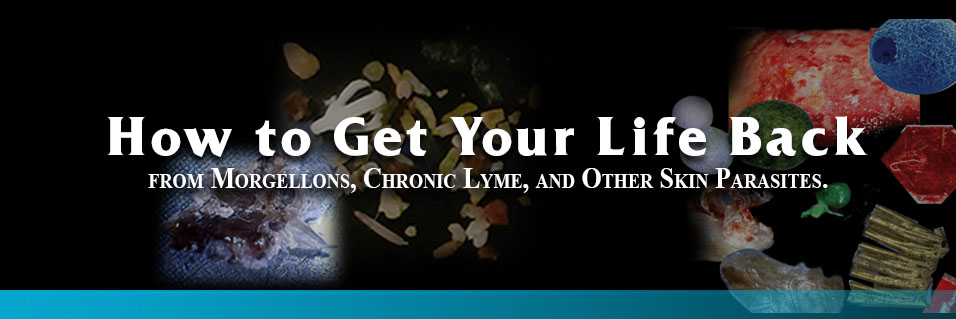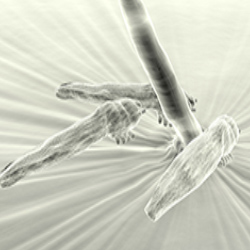

|
 |
How Demodex Mites Figure into Morgellons Disease 3/20/2022 |
Barbara writes and asks if demodex mites are connected with Morgellons disease. " Hi Richard.
I've been reading all your excellent information about Morgellons & have a question about two under diagnosed parasites that almost EVERY human is carrying on their eyelashes, in small, well-controlled numbers. The human Demodex Folliculorum & Demodex Brevis which are supposedly harmless until they overwhelm the human immune system, overpopulate all over their human victims (called Demodicosis) and cause extensive damage to their skin and to their lives w/ many of the same symptoms as Morgellons. The clump of Morgellons 'worms' in photos I've seen, look VERY much like Demodex or one of their relatives but it's hard to tell from a 'group photo'. I've had treatment resistant Demodicosis for almost 10 years now, along w/ some of the red, blue & black 'threads'. New research suggests that treatment resistant demodicosis may be a genetic problem having to do w/ a defect on HLA (the C & the A, I believe) and another study from Jerusalem showing immune system flaws. Just curious if Demodicosis & Morgellons are related, do they have cures in common and can you have BOTH? Thank you for your time & hoping for help, Barbara
Hi Barbara, You certainly seem well versed about demodex. To answer your question, Morgellons doesn't care what co factors you might provide it to thrive with. But, while demodex can be a co factor, it is not a very prevalent co factor. So, yes, you can be dealing with both Morgellons and demodex at the same time. But the more often co-factors are fungal issues, internal parasites, candida (fungal), other mites, leaky gut, EMF sensitivities, and so on. Hope this helps," I thank Barbara for writing. According to WebMd, article, "What are Demodex Mites," It's not certain whether rosacea is caused by demodex mites or something else. Normally, Demodex mites are friendly and serve the purpose of consuming dead skin cells. However, according to the WebMd article, over population of them can lead to: "Blepharitis. Blepharitis is an inflammation of the eyelids caused by a blockage in the oil glands in that area. It’s possible for a Demodex mite infestation to cause blepharitis by blocking the oil glands at the base of your eyelashes. That’s often the reason that patients over the age of 60 develop blepharitis. Signs of blepharitis can include:
If you are of the belief that demodex is a problem read blog post "Demodex Mites and Morgellons" dated 5/26/19. But, realistically, demodex mites are often not a problem and co-exist on human skin without creating problems. As stated in the blog post, they do not create excrement as even dust mites do. It seems that when we hear the word, "demodex" is heard, it's easy to remember and be adopted as being the problem. Nevertheless, for all mites, lufenuron is recommended along with Nitenpyram available from the people that provide lufenuron. Topically, any of our creams or lotions applied frequently to the affected areas. |

|